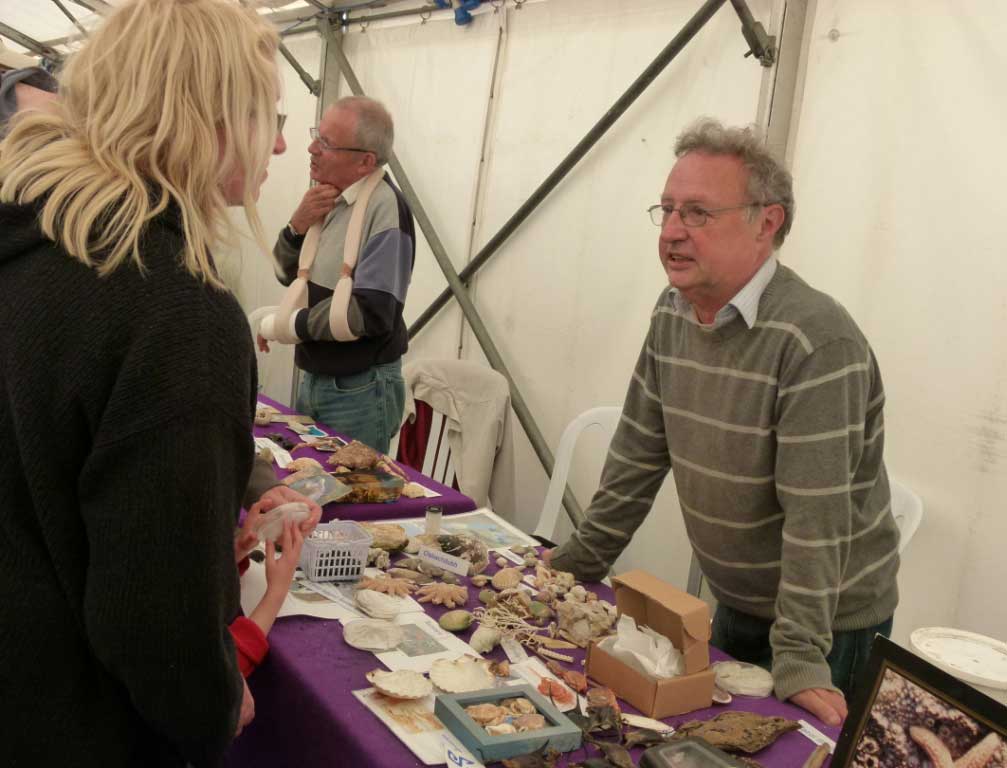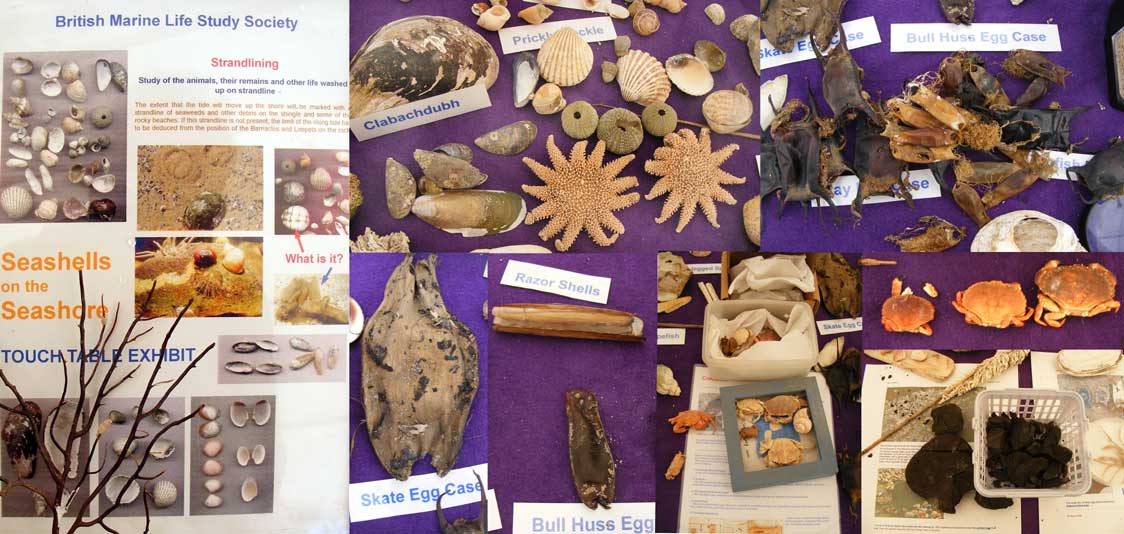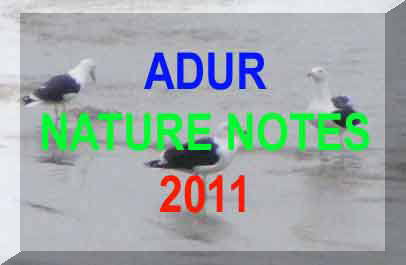 Information
Information
Coastal saline lagoons and the Water Framework Directive (NECR039)
A number of coastal saline lagoons in the UK have been identified as ‘water bodies’ under the Water Framework Directive. This means that there is a requirement to develop type-based classification tools to help assess their ecological status. This study was commissioned by Natural England to inform future work of the UK Technical Advisory Group and Marine Task Team in developing a national consistent approach to the assessment of lagoons under the Water Framework Directive.
World of Widewater
(Community Group)
Events
11 June 2011
Environmental
Festival & Adur World Oceans Day 2011
Understanding
and celebrating our marine environment
The
wind
and rain held off for the eleventh
Adur
Environment Festival and Adur
World Oceans Day went well in the marquee on
Coronation
Green, by Shoreham
Footbridge at the High Street
end on the second Saturday
of the Adur Festival. Len
Nevell of the British
Marine Life Study Society was there with the usual exhibition of lobsters
and crabs.
World
Oceans Day on Facebook
|
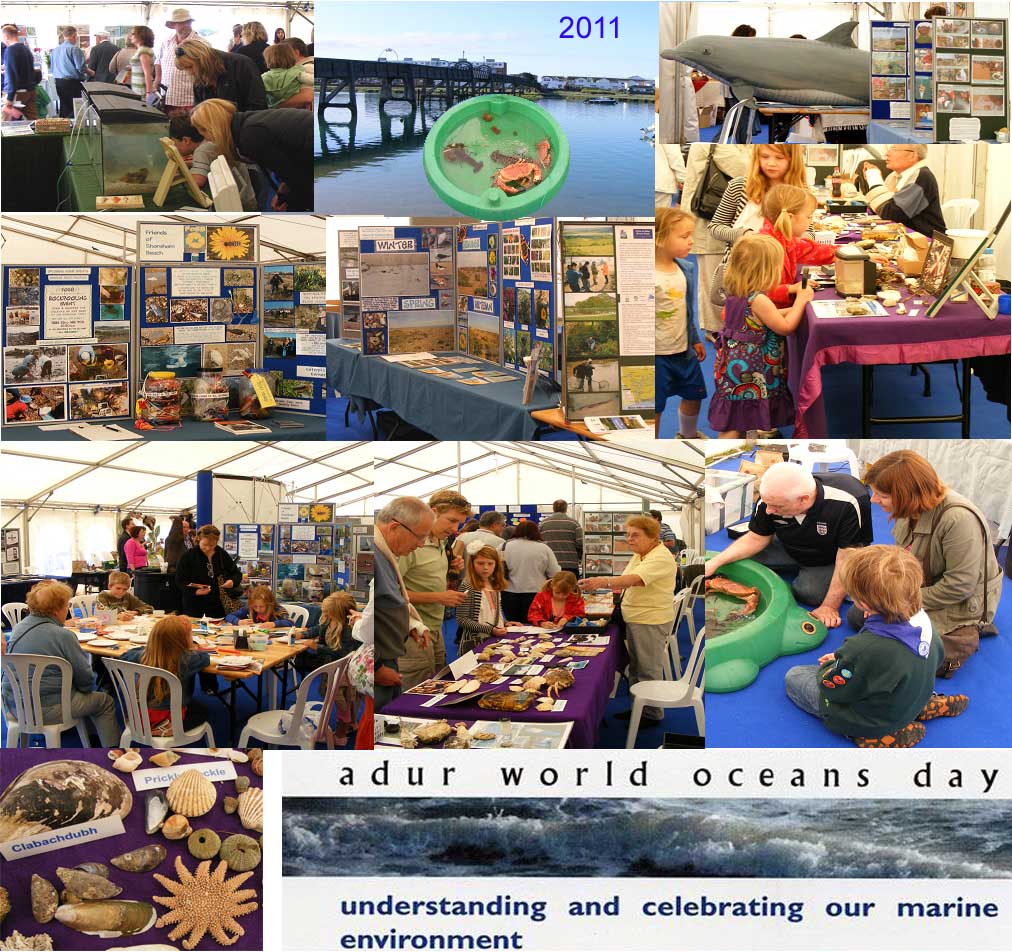 |
"The
aim of the event is to introduce the young visitors to the world of the
sea and seashore,
an opportunity they may not get .It is an educational event with an opportunity
for children to participate in the interactive
activities."
Quote
by Andy Horton (British Marine
Life Study Society)
Adur
World Oceans Day Blogspot 2011 et seq.
3 - 24 May 2011
 |
 |
Exhibition at the Marlipins Museum, High Street, Shoreham-by-Sea
Reports
15,
17, 18, 21 to 24, 26 & 27 December 2011
A
pair of Snow Buntings were
seen near Widewater Lagoon on nine separate
dates.
10
December 2011
Three
Snow
Buntings flew along the beach at Widewater
west towards Lancing (lost to sight) at 4:00
pm.
8
December 2011
There
were at least ten Cormorants
resting on the island with one Great Black-backed
Gull, and numerous Mallards
on Widewater Lagoon around 2:15 pm.
A Redshank
probed in the shallows.
5 December
2011
I
felt very privileged to be able to see the courting displays of the Red-breasted
Mergansers in the morning at Widewater.
Two
Snow Buntings were seen in the same place
near Widewater.
4
December 2011
On
Widewater Lagoon in the morning were four pairs of Red-breasted
Mergansers cooing and billing so to speak
and were marvellous to behold at such close quarters; they flew as one
out to sea at about 10:00 am.
I
went down to Widewater Lagoon around 2:00
pm and within a few minutes I had picked up
the two very confiding, Snow Buntings
on the shingle, west of Beach Hut 134 between the second set of groynes
- about half way up the beach where the shingle slopes. They flew off east
around 2:30 pm
but I don't think they flew too far.
3
December 2011
I
was able to find the two Snow Buntings
still on east Lancing beach 50 metres west of the pink beach huts. However
in the 2-3 minutes it took to get my camera from the car they vanished
and despite searching several hundred yards east and west could not relocate
them. Six Red-breasted
Mergansers (4 males) were on Widewater
Lagoon.
I had great views of two Snow Buntings feeding at high tide mark on beach by Widewater Lagoon, Lancing about midday in front of beach huts.
27
November 2011
Two
Snow
Buntings, Plectrophenax
nivalis,
were spotted on the beach at Widewater in the morning. The strong wind
made it difficult to keep my big lens steady but I managed to get a few
images (photo).
Snow
Buntings are
a very
scarce winter visitor and passage migrant to the Shoreham area. There
were Little Grebes
on the lagoon along with a single Teal.
9
November 2011
A
White-beaked
Dolphin, Lagenorhyncus albirostris,
was observed by surveyors
bow-riding
their vessel about 15 miles south of Worthing. We had a small group of
White-beaked
Dolphins sighted some miles off shore between
Eastbourne and Dieppe back in April
this year. This species often bow-rides so it is interesting that both
local sightings of these dolphins were bowriding. This
species is not normally recorded in the English Channel.
Whales & Dolphins in British Seas
 |
9 November
2011
3 &
25 October 2011
|
3 &
25 October 2011
Two
mature Mute Swans
were seen separately on Widewater with two fully grown grey
cygnets accompanying one of the adults on
the flooded lagoon.
12 September 2011
At least 15 Cormorants were resting on the island (east of the bridge) in Widewater Lagoon.
Widewater Online Newsletter for September 2011
9 September 2011
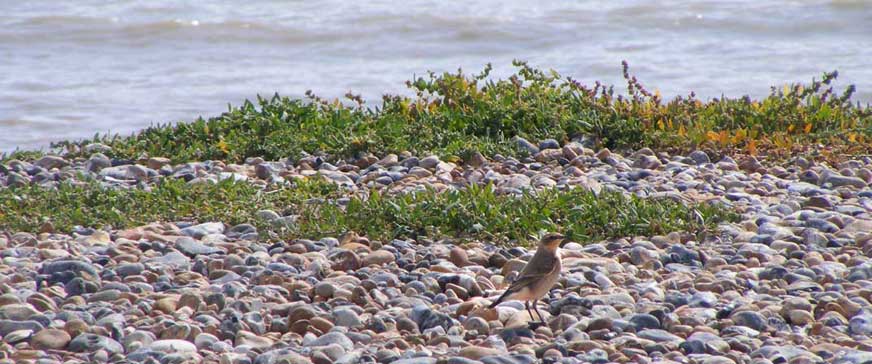
A Wheatear trotted over the Orache-covered high tide mark at east Worthing as a prelude to its southerly migration. On the sand flats opposite Brooklands, halfway to the low neap water (3 metres), the small 20+ flock of small birds were not the expected Sanderlings but Ringed Plovers, with a few Grey Plovers nearer the sea.
1 September
2011
Three
Little
Egrets were seen fishing in the shallows
of Widewater and three more were seen amongst the Sea
Purslane on the mud
flats between the Footbridge and
the Norfolk Bridge.
 30
August 2011
30
August 2011
An
Australian
Black Swan on the Widewater was seen attacking
the resident pair of Mute Swans
and the ducks
just to the west of the Causeway bridge. The Black
Swan had its wings raised as it raced towards
the resident birds.
A Little Egret stalked the shallows on a low spring tide. But there were only small prawns and two juvenile Bullheads, Taurulus bubalis, netted near Chart Datum on Kingston Beach. A few Squat Lobsters, Galathea squamifera, and a very small Common Starfish Asterias rubens, hid under boulders. A Tern dived into the calm sea and an Oystercatcher flew overhead before landing on the sand and then flew away squawking.
12
August 2011
In
the weak afternoon sunshine seemed to have encouraged at least 13 adult
Wall
Lizards, Podarcis
muralis, that basked in the sunshine before skittering
rapidly back in their holes, mostly on the west wall of the Old
Fort, but at least two on the south-facing carnot
wall and two in the undergrowth away from the wall. No juveniles were
seen, but these have been seen in gardens of Old Fort Road on Shoreham
Beach where the lizards are frequently seen. A Common
Blue Butterfly fluttered amongst the Bird's
Foot Trefoil, and I spotted the shadow of
an unidentified dragonfly on the flint wall,
hawking to and fro. Frequent Large White
Butterflies were seen amongst the Sea
Kale.
14
June 2011
With
the sun out for a change and the wind had died down to a manageable breeze,
on Silver Sands
on the Shoreham Beach peninsular, there was over a hundred Childing
Pink in flower,
but all of them had just the single flower. Starry
Clover was going to seed near the Old
Fort, where no Wall Lizards
were seen.
5 June
2011
A
few Childing Pink with
single flowers showed on their only
location at Silver Sands.
 |
 |
 |
 |
 |
|
|
|
|
|
|
The Friends of Shoreham Beach Wild Flower Walk took place at the east end of Shoreham Beach. Flowers seen for the first time this year included Starry Clover, Bristly Ox-tongue, Silver Ragwort, and Hedge Mustard.
2 June
2011
There
was too much weed
to make shrimping
practical on Lancing
Beach, with under ten Brown
Shrimps, Crangon crangon,
in just over half an hour push-netting. One very young Greater
Pipefish Syngnathus acus,
fry that came with the weed and quickly wriggled to escape through the
mesh of my smaller metre-wide shrimp net. It was the first capture, followed
by two
South-clawed Hermit Crabs,
Diogenes
pugilator, in Netted
Dogwhelk shells, one small Arch-fronted
Swimming Crab Liocarcinus
arcuatus, just
one small Sand Sole, Pegusa
lascaris, and
two small flatfish fry.
Most
of the Brown
Shrimps were
at the end of their life span and a few died in the bucket.
Shrimping
Report
19
May 2011
A
large plain green specimen of the Beadlet
Anemone, Actinia equina,
collected on Worthing Beach
on 18 April 2011 suddenly
diminished in a manner seen before in the Actinia
sea
anemones. The green specimen with a basal diameter of approximately
60 mm and a larger tentacle span shrivelled up into a smaller version that
looked as though it might be dying, and the tentacles became thinner than
those of the Snakelocks Anemones, Anemonia
viridis, and the oral disc disappeared
from view covered by the partially retracted tentacles. On 20
May 2011, I noted that sea anemone had returned
to its normal appearance. On 21 May 2011 I
noticed that its column was covered in spots which were pronounced enough
to be nearer in appearance to the designated species Actinia
fragacea. Its spots were distinct
light green but the background colour of the column became brown rather
than red. It was slightly smaller with a basal diameter of about 50 mm.
Intermediate forms or Actinia
equina
with
green lines and spots are known to occur occasionally. This anemone has
green
tentacles whereas the usual "strawberry
type" has crimson or red tentacles.
Actinia
fragacea has
strawberry-like (usually green on a red column) spots all over the column
of the anemone. The similar species Actinia
equina
can have green stripes and dotted lines, so there can be confusion between
the species as the dividing line is not clearly demarked by appearance.
BMLSS
Sea Anemones
17
May 2011
Conditions
on the low spring tide at Kingston Beach
were inimical to rockpooling because of the
black silt near Chart Datum. I did catch
a few large Edible Prawns, Palaemon
serratus, a very small Common
Starfish Asterias rubens,
prised from under a rock, a small sea anemone Sagartia
troglodytes on the underside of
a boulder, a small Common Hermit Crab Pagurus
bernhardus in a Periwinkle
shell; and I noted frequent large Dogwhelks
Nucella
lapillus, and their eggs and some
of them were very large for the species and included a brown specimen.
13
May 2011
At
the western side of the bridge over Widewater a pair of Mute
Swans were actively feeding with eight
cygnets
with them.
10
May 2011
The
Mute
Swan cygnets
were taken on to the Widewater. There are eight. The average clutch size
is six so this pair have done well.
Cygnets
get tired and cold at first when they take to the water so they often climb
on to the swans back ( they are born with the instinct to climb ) and nestle
into the warm feathers! They “imprint” on to the first large moving object
that they see ( usually the swans!! ) and follow it.
9
May 2011
On
a passage trip to Lancing I noted the white butterflies around the flowering
Sea
Kale on Shoreham Beach, not seeing them
still so I did not recognise them to species although I thought that at
least some of them must have been Small
Whites because of their small size and
lack of black seen in flight. The larger ones were Large
Whites. Red
Valerian was flowering profusely but not
at the height of its blooms. Sea Thrift
was impressive in large swathes east of the bridge on the grass levels
by the Tamarisk and shallows.
Two Pipits were
chasing each other and I was struck by the much lighter colour than usual
of their plumage, as they chased each other and disappeared over the ridge
of shingle at the highest point up the beach. I think they are Meadow
Pipits, Anthos
pratensis, that had just moulted
as the most probable identity. (Rock Pipits,
Anthos
petrosus, are much scarcer especially
during their breeding season.)
8 May
2011
The
first cygnets
hatched in the Mute Swan's
nest at the bottom of a garden on the west side of the bridge. The hen
had laid 10 eggs and it was difficult to know how many had hatched.
23
April 2011
There
were almost ideal condition for shrimping
of Lancing Beach (east Widewater) with a gentle almost imperceptible swell,
almost negligible Light Breeze Force
5, (5 mph,
NNE), pleasant weather
with an air temperature of 18.9 °C
on the 9.50 am
low tide of 1.1 metres. Brown
Shrimps, Crangon crangon,
were
common (200+ caught in 40 minutes), although some were too small for the
pot. The water was clear and free of weed, but there was very little else
around. I caught two young Plaice,
Pleuronectes
platessa, one of which escaped and
a handful shot off at the approach of the smaller (one metre) semi-circular
shrimp net, and the only other incidentals were three very small Common
Hermit Crabs, Pagurus bernhardus,
(i.e. not Diogenes)
in Grey Topshells and Netted
Dogwhelk shells.
Advection
fog set in over the sea as the tide
turned and the visibility was diminished to under 50 metres.
Met
Office: Shoreham
22 April 2011
A small adult Rock Goby, Gobius paganellus, was discovered on Kingston Beach.
18
April 2011
My
first Wheatear
of the year was hard to spot well camouflaged against the shingle on Lancing
Beach (by Widewater)
above the high tide mark. There
were two Mute Swans
on Widewater, one at each end of the lagoon.


Two
anemone-eating
nudibranchs,
the Grey Sea Slug,
Aeolidia
papillosa, were discovered
under rocks under Worthing
Pier.
Worthing
Pier Rockpooling Report
23
March 2011
A
half a dozen adult Wall
Lizards, Podarcis
muralis, skittered
rapidly over the south-facing flint wall of the Old Fort, Shoreham Beach,
in the weak sunshine. They were my first reptiles seen this year.
 20
March 2011
20
March 2011
In
the early evening, I recorded by first wild fish of the year a 5-Bearded
Rockling, Ciliata mustela,
on the kelp-covered shore by Brooklands (west Lancing, west of the pipeline)
plus my first crab, a very small Velvet
Swimming Crab,
Necora
puber. The
shore was very poorly inhabited with frequent Squat
Lobsters,
Galathea
squamifera, occasional small Hairy
Crabs, Pilumnus
hirtellus, and tiny Long-clawed
Porcelain Crabs, Pisidia
longicornis,
one very small Edible Crab,
Cancer
pagurus, one large green Shore
Crab Carcinus
meanas. Two Snakelocks
Anemones,
Anemonia
viridis, had not quite completed their division
into two, and there were occasional small sea anemones
Sagartia
troglodytes. As it was getting too dark to
see clearly, a tiny thread-like juvenile
Butterfish,
Pholis
gunnellus, eluded my cold fingers. An Edible
Prawn, Palaemon serratus,
jumped backwards from under a weed-covered rock.
12 February 2011
